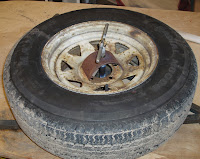In my experience:
The first thing to consider is how much electrical power do you use on an average day.
You use many electrical consuming devices, inverter to run 110 volt appliances, furnace motor when in cold weather, tv's, satellite receivers, computers, signal boosters for internet and phones, warning devices, some have even more demands. A rough energy audit really helps as a starting point.
It has always been a goal to lower the power consumption. It is easy to keep the batteries full during perfectly sunny days, But weather does not always cooperate, so it is a good idea to have some overcapacity when it comes to charging batteries, and under consumption when it comes to usage.
One of the ways to sustain the battery power available especially during the cloudy calm days is to use a little of amp hours as possible during those days.
I have been playing with LED lights for a few years and there have been great advances in the quality and cost of the led lights.
Here is a little information I can relay to those thinking about it:
When starting these were the only leds that were available, seperate (I call) bulb type of leds attached to a board.
They worked ok, were not very bright, also some of the "bulbs" would burn out
I used these bulbs in the light fixtures that I used the most of the time to keep the electrical usage as low as possible for lighting.
Later on the SMD LED came out.
What an improvement, they are much brighter.
Here is more information on them.
They use 2.4 watts
The old incandescent bulb uses 23 WATTS.
Consider each light fixture in a camper has two of these lights. The power saving is incredible.
46 watts compared to 4.8 watts for each light fixture.
A couple of years back I decided it would be nice to have a lamp between the recliners, since there is a cabinet that houses the the converter and electrical boxes.
I shopped around for awhile and found a small lamp ... found this one at Lowe's
Since I did not want to use 110 volt light bulbs that uses way too much power.
I disassembled the electrical components to adapt it to LED power.
This shows the led light fitted to the lamp.
The bulb only uses 1.5 watts !
Although it is equivalent to a 25 watt bulb light output wise.
Here is where I got the LED
I am a big fan of Superbrightleds.com. I know there are cheaper places to get leds, I like the super customer service, and products that work.
 This shows the MR16 receptacle for the led in the 110 volt housing, I used common silicone to full the void in sizes of the hardware of the 110 volt housing.
This shows the MR16 receptacle for the led in the 110 volt housing, I used common silicone to full the void in sizes of the hardware of the 110 volt housing.Worked out really well and easy to do.
Here is where you can get the MR16 Socket
I have also played with some outdoor leds this year:
These are sealed for outdoor use. The ones I purchased have 4 leds, they also have units with 6 leds.
The four led units are pretty bight, not disappointed
Here is the link for these guys
They use .3 watts per unit
I installed 3 of the led units on the side of the camper to use for outdoor activities,
I like them . very pleased..
I like them . very pleased..
Activities like this one
This photo show the lighting using power provided completely off-grid in the Arizona Desert
The palm tree is powered by solar rope led lights that have their own small solar panels
Although it hard to see the neon lights are run by an inverter
The pink flamingo's are powered by small led I put inside of them
The light at the right is a solar powered yard light that is on top of a re bar pole.
The open door on the left, you can see the interior led lights lighting up the inside of the trailer.
This shows the neon and flamango's lighted
CHEERS !




















